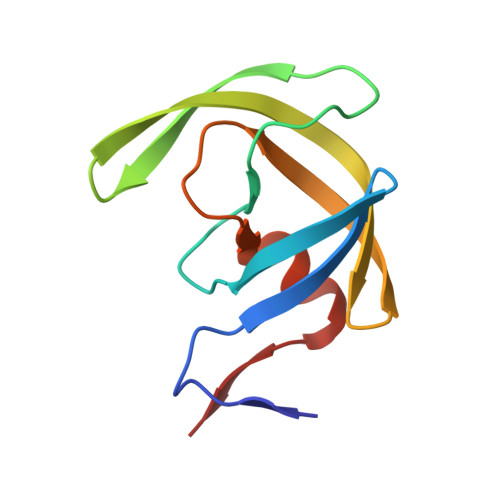Suppression of HIV-1 Protease Inhibitor Resistance by Phosphonate-mediated Solvent Anchoring.
Cihlar, T., He, G.X., Liu, X., Chen, J.M., Hatada, M., Swaminathan, S., McDermott, M.J., Yang, Z.Y., Mulato, A.S., Chen, X., Leavitt, S.A., Stray, K.M., Lee, W.A.(2006) J Mol Biology 363: 635-647
- PubMed: 16979654
- DOI: https://doi.org/10.1016/j.jmb.2006.07.073
- Primary Citation of Related Structures:
2I4D, 2I4U, 2I4V, 2I4W, 2I4X - PubMed Abstract:
The introduction of human immunodeficiency virus type 1 (HIV-1) protease inhibitors (PIs) markedly improved the clinical outcome and control of HIV-1 infection. However, cross-resistance among PIs due to a wide spectrum of mutations in viral protease is a major factor limiting their broader clinical use. Here we report on the suppression of PI resistance using a covalent attachment of a phosphonic acid motif to a peptidomimetic inhibitor scaffold. The resulting phosphonate analogs maintain high binding affinity to HIV-1 protease, potent antiretroviral activity, and unlike the parent molecules, display no loss of potency against a panel of clinically important PI-resistant HIV-1 strains. As shown by crystallographic analysis, the phosphonate moiety is highly exposed to solvent with no discernable interactions with any of the enzyme active site or surface residues. We term this effect "solvent anchoring" and demonstrate that it is driven by a favorable change in the inhibitor binding entropy upon the interaction with mutant enzymes. This type of thermodynamic behavior, which was not found with the parent scaffold fully buried in the enzyme active site, is a result of the increased degeneracy of inhibitor binding states, allowing effective molecular adaptation to the expanded cavity volume of mutant proteases. This strategy, which is applicable to various PI scaffolds, should facilitate the design of novel PIs and potentially other antiviral therapeutics.
- Gilead Sciences, Inc., 333 Lakeside Drive, Foster City, CA 94404, USA.
Organizational Affiliation:

















